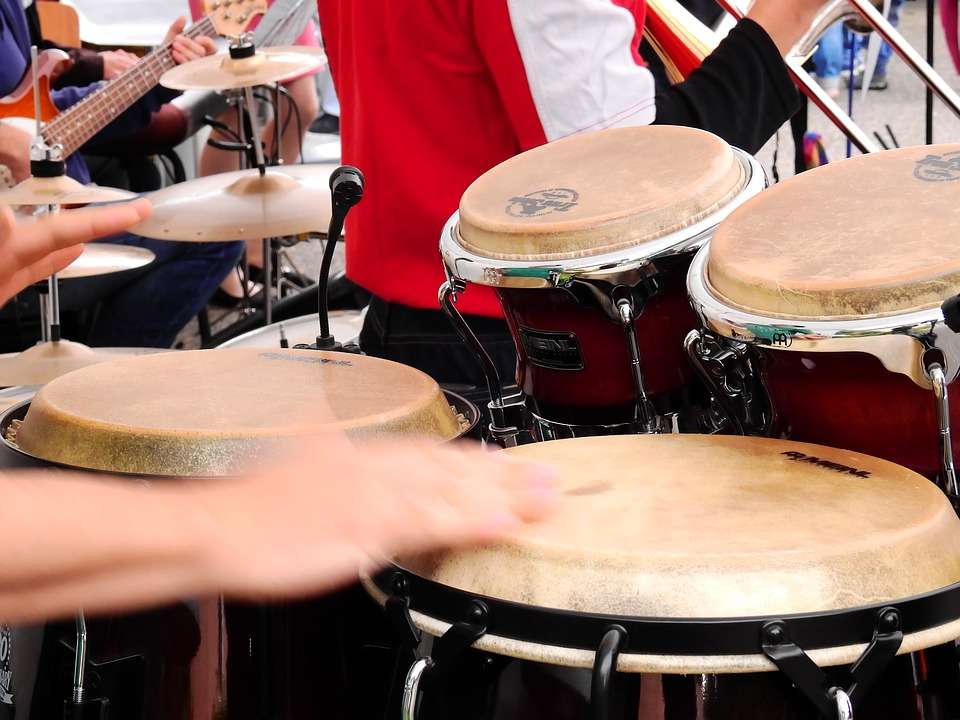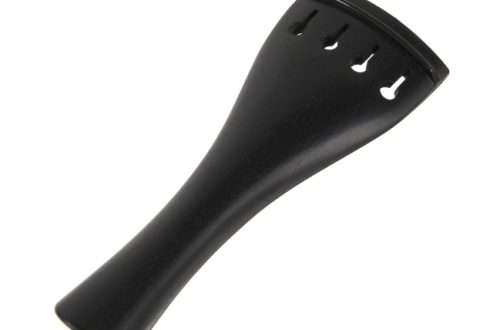
Techniques of playing congas

The congas are played with hands, and to obtain differentiated sounds, the appropriate positioning of the hands is used, which play against the membrane in an appropriate way. A full kong set consists of four Nino, Quinto, Conga and Tumba drums, but typically two or three drums are used. Already on a single cong we can get a very interesting rhythmic effect, all from the right positioning of the hand and the force of hitting the membrane. We have two such basic strokes, OPEN and SLAP, which are open and closed strikes. At the beginning, I suggest focusing on mastering a single congo, and only at a later stage break the given rhythm into two or three instruments. Let’s start with our starting position, place your hands as if it were a clock face. Place your right hand between “four” and “five” and your left hand between “seven” and “eight”. The hands and forearms should be placed so that the elbow and middle finger form a straight line.
OPEN impact
The OPEN impact is obtained with the fingers joined together and the thumb sticking out, which should not be in contact with the membrane. At the moment of impact, the upper part of the hand plays against the edge of the diaphragm so that the fingers can automatically bounce off the central part of the diaphragm. Remember that at the moment of impact, the hand should be in line with the forearm, and the arm and the forearm should form a slight angle.
SLAP impact
The SLAP punch is a bit more complicated technically. Here, the lower part of the hand hits the rim of the diaphragm and the hand slightly moves towards the center of the drum. Place a basket from your hands that will cause only your fingertips to hit the drum. Here the fingers can be pinned together or slightly open. Remember that when hitting SLAP, your fingers stay on the membrane automatically damping it.
How do I get a different pitch?
It is not only how we hit the diaphragm with our hand, but also where we play it. The lowest sound is achieved by hitting the center of the diaphragm with an open hand. The further we move from the central part of the diaphragm towards the edge, the higher the sound will be.

Afro rhythm
The Afro rhythm is one of the most popular and distinctive rhythms from which many different varieties of Latin rhythms have their origins. It consists of four components, of which the tomb is the rhythmic basis. In the tomb rhythm counted in 4/4 time in the bar, the bass plays three basic beats alternately right, left, right. The first note plays (1) at a time, the second note plays (2 and), and the third note plays (3). We play all these three basic notes on the central part of the diaphragm. To this basic rhythm we can add more strokes, this time against the edge. And so we add on (4) an open stroke against the edge. Then we enrich our rhythm with another open edge beat on (4 i) and for complete filling we can add an open edge beat on (3 i).
Summation
Anyone with a sense of rhythm can learn to play the kong. Playing this instrument can bring great satisfaction, and more and more bands are enriching their instruments with the conga. These instruments are an integral part of the traditional Cuban culture and when you start learning, it is worth building your technical workshop on the basis of Latin American styles.





